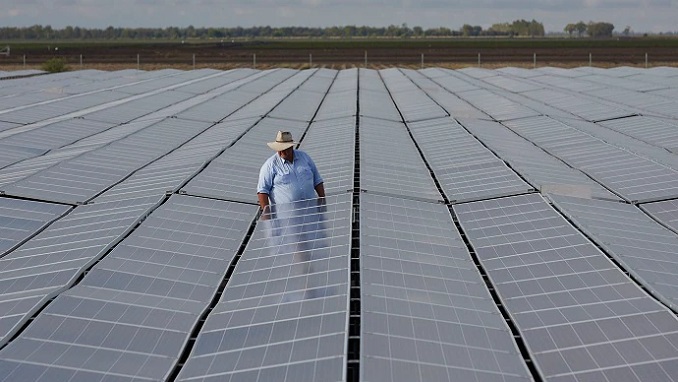In its latest report, the Intergovernmental Panel on Climate Change (IPCC) came to a clear conclusion that climate change has reduced food security and access to water for millions of people. The situation will continue to deteriorate without decisive action, the report noted.
By 2050, the UN estimates that one in four people will experience water shortages, both for drinking and agriculture.
On the other hand, according to the UN, a stable supply of water, renewable energy and food are the three most essential factors for life today. However, part of the world’s population still does not have access to clean water and clean energy sources.
Under these conditions, researchers have created a solar panel system that efficiently grows plants using water from the air and generates electricity in the process, The New Scientist reported.
This innovation provides an affordable and sustainable strategy for improving food and water security in many arid and semi-arid global regions.
Globally, it is estimated that 2 billion people do not have access to clean water, 800 million do not have access to electricity, and 700 million live in constant hunger.
All SDG goals are integrated, i.e. related to each other: intervention in one area affects the results in others. Not least they aim to end poverty, protect the planet and ensure that by 2030 all people live in peace and prosperity.
Achieving the SDGs by this time will largely depend on how to improve the lives of billions of people, most of whom live in rural, arid or semi-arid Africa, South Asia and the Middle East.
Given these goals and the geographic context (climate, areas away from major cities), decentralized and sizable approaches are currently considered the most appropriate for cost-effective provision of electricity and water in these rural areas.
It was previously noted that the collection of atmospheric water with the help of solar energy is able to satisfy the need for drinking water – 5 liters per day per capita – of more than two billion people worldwide.
Other studies also talk about the use of environmental moisture for energy recovery, self-sufficient urban agriculture, and off-grid moisture management systems. Thus, the use of atmospheric water as an alternative water resource seems promising. Indeed, the atmosphere permanently stores over 12,900 billion tons of fresh drinking water. This water is constantly replenished during the water cycle.

